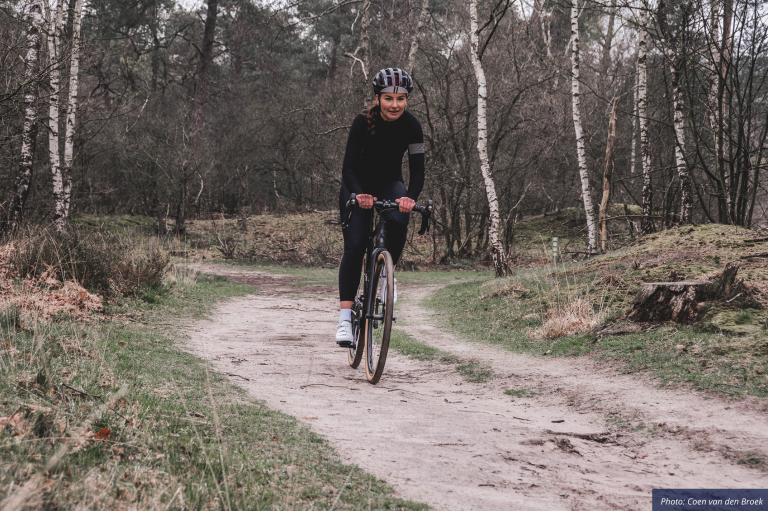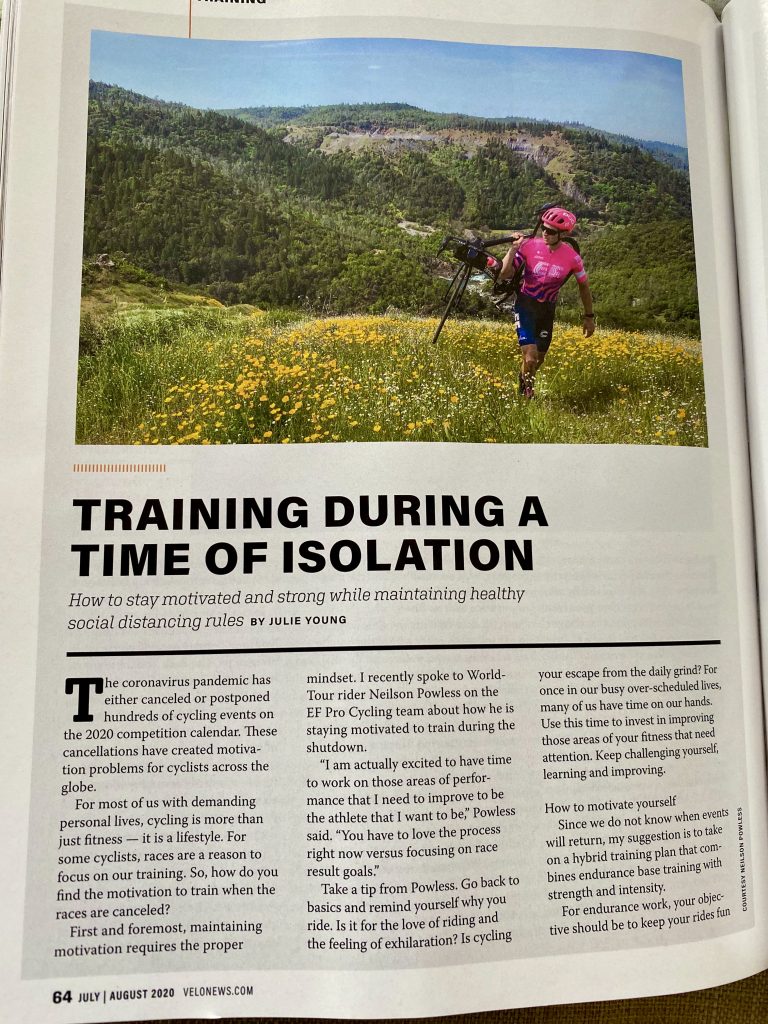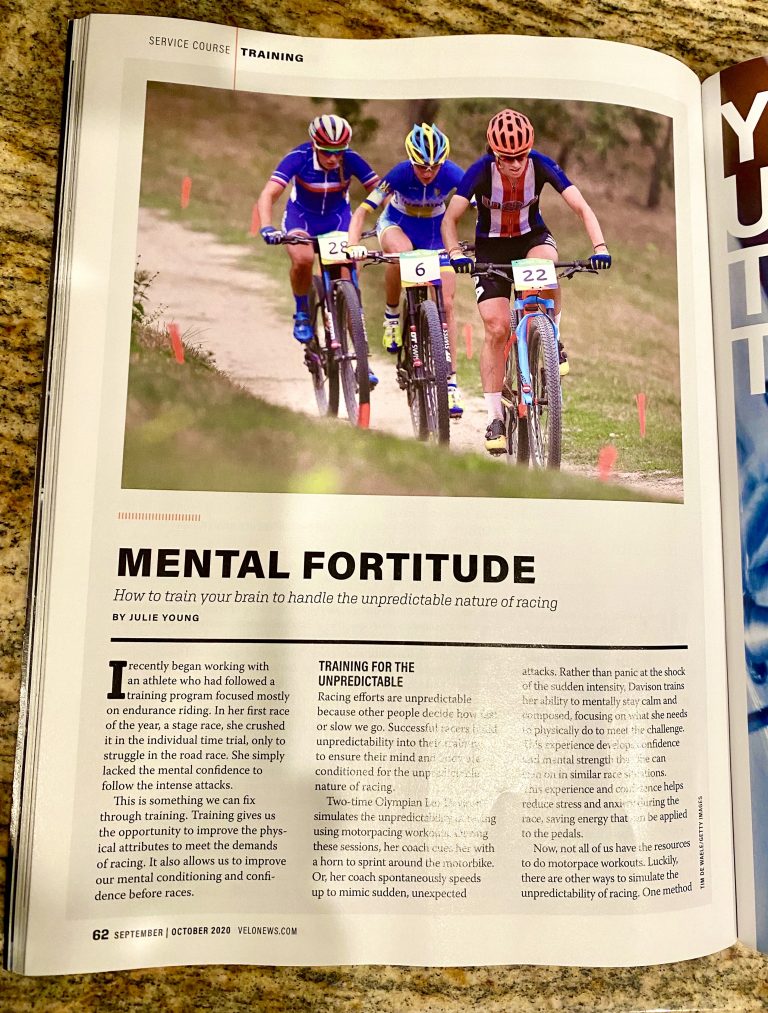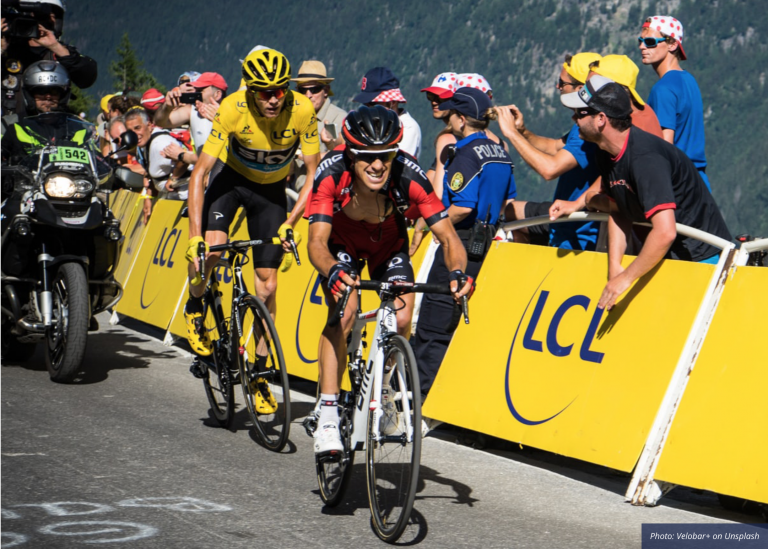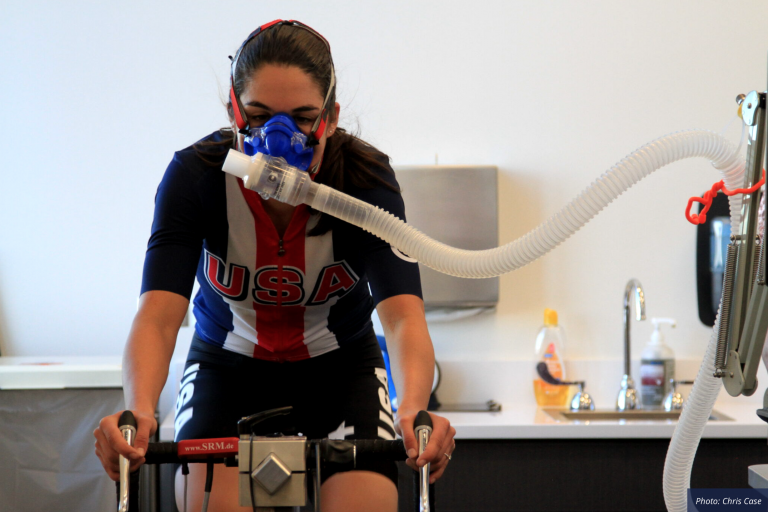Mindset is Everything – Mental Strategies to Improve Your Athletic Experience
As I was watching the last World Cup MTB race, the commentators were speculating on why certain riders were excelling and others not riding to their potential, attributing it to this or that physical reason. But as I was watching, I was wondering what the riders were thinking that might be contributing to or inhibiting their performance.

As I wrap up the sports psychology section of my masters program, it has been interesting to understand from a more science-based perspective, the mental strategies that I seemed to somewhat naturally stumble upon and adopt during my elite sporting life. Throughout my athletic career, I have clearly felt the power of the mind on my physical performance and I am a believer. Generally, in athletic conditioning and performance, I do not think we provide sufficient attention and credit to the value and importance of mindset. At a certain point, all physical things being relatively equal, I think the mental approach determines the outcome. As they say, mindset separates the best from the rest.
Intrinsic versus extrinsic motivation
I think a core essential to success in sport, at any level, is “why” we do it. Are you intrinsically or extrinsically motivated? We all probably operate from varying ratios of both, across a spectrum, but it seems based on science and experience that in order to succeed a majority of the motivation must be fueled intrinsically.
People who are intrinsically motivated are drawn to activities or a sport for – self-challenge, the ability to continue to improve, the pursuit of excellence, as well as the exhilarating feel of the experience. Intrinsic motivation provides a sense of autonomy and ultimately improves self-efficacy (the belief in your ability) and confidence, key contributing factors to optimal performance. Intrinsic motivators are stable and lasting, you can count on them always being there because they are internally derived. Science and anecdotal evidence, says that when you find that thing, that deeply and sincerely inspires you, and that you love to do, you will thrive and succeed.
Extrinsically motivated athletes are fueled by external factors, such as social praise, accolades, and awards. These things are fleeting, here and gone. They are based more on outcomes and results, factors we cannot necessarily control versus attributes like effort and skills that we can control.
Develop challenging yet achievable goals
Goals are vital in sport, and they are entirely relative to each individual. Racing and competing is not the end-all. But as athletes, we need to have focal points to effectively organize training, motivate us, and provide a measuring stick. In any case, we need to maintain a balance in our goal setting, with the process, performance, and outcome goals. As athletes, we cannot base our entire self-worth on outcome goals, whether we win or lose. This sets us up for a negative experience and does not support longevity in the sport. Process goals are the baby steps needed to achieve the performance goals. These, for example, could be considered structured workout, or in gym stability, mobility and strength work. Both of these workouts are measurable (provide tangible feedback) and work toward meeting the demands of sports performance. Performance goals are objectives within a race, for example, in a bike race working to position near the front. Process goals are building blocks to performance goals, which then work toward outcome goals, a.k.a results.
Kicking the fear-of-failure habit

Having a balanced approach to goal setting provides tools to better contend with a failed or disappointing performance. Take a moment and think about your athletic hero. He/she has certainly experienced a disappointing, or what could be termed failed performance. Everyone does. But the difference is how we use these disappointing performances. If we go back to the idea of developing a balanced goal-setting approach, we can more objectively evaluate a disappointing race. And then use this information and feedback to further fine-tune the training plan, to improve and enhance performance. Taking this perspective helps alleviate the fear of failure, which in and of itself inhibits optimal performance.
How we contend with disappointments and perceived failures also circles back to how and why we are motivated. If we are more intrinsically motivated, we use our sport as an outlet for self-challenge and self-improvement. With firmly established motives, we can capitalize on outcomes, good and not so good, as informational feedback. I have found my most disappointing performances have been my greatest motivators for improvement, fueling more purposeful and intentional training. In other words, I have found disappointments make me want it, even more.
Make more of the unknowns, known
Generally, as athletes, if we can adopt strategies, like routines, we develop a greater sense of control. Routines help us make more of the unknowns, known. This helps reduce stress and anxiety, improves our sense of control, and contributes to improved performance. Imagery discussed below, can also help in this respect, by allowing us to visualize, anticipate and “act on” various expected scenarios.
Additionally, a well-structured training plan, with workouts intended to meet the specific demands of your goal event, helps make more of the unknowns, known. Workouts provide the dress rehearsal, and mentally and physically condition us to contend with the sensations of race intensity and successfully run or ride through it. Mentally and physically tackling challenging workouts in training, provides invaluable confidence on race day, that “you can do it!”
Mental strategies to add to your tool kit
A couple of mental skills I have found effective throughout my athletic career, and fairly simple and easy to implement are imagery/visualization and motivational self-talk.
I typically use visualization leading into a race and during training sessions. I break the course down into sections (just the way I want to attack it on race day). I visualize with as much sensory detail as possible those sections of the course, for example, feeling the wind, hearing the sounds, etc. I visualize different tactical scenarios, and how I want to feel and race those sections. In training, I use visualization, for example, during interval sessions. While doing the interval, rather than chasing power numbers or just ticking off time, I visualize myself riding a section of an upcoming race. Visualization creates a blueprint for the neuromuscular system. It helps us remove the thinking mind (which can be problematic) out of the action, allowing us to move with greater automaticity and effectiveness.
I think motivational self-talk, is my favorite mental skill because I have experienced its effects in practice so clearly and powerfully. Self-talk helps us bring our focus back to the things we can control, i.e. our effort, versus things we cannot control, i.e. what our competitors are doing. There are two forms of self-talk – motivational and instructional. Instructional relates to those sports that are technically demanding, for example, golf. This self-talk is used to talk ourselves through the mastery of a skill. It also helps tone down the athlete’s energy level, so he/she is not too hyped up to make the required fine-motor skill movement.
Motivational self-talk, on the other hand, increases energy levels and psyches us up to tackle the challenge at hand. This type of self-talk is applicable to endurance sports. It is easy to implement. Simply find a word or short phrase that resonates with you. I remember so vividly pivotal points, stage racing in Europe, the hammer was down, and intensity through the roof. It was my mental thought process, i.e. my motivational mental mantra that drove my physical effort, to give those five more pedal strokes that ultimately made the decisive difference. A seemingly simple but meaningful, “I can do this” fueled my grit and determination and paid off physically.
So, to wrap it up, work on changing your perspective on disappointing performances, just use it as valuable feedback to continue to learn and improve. This will help take the fear of failure out of the equation, and with it, inhibiting and detrimental pressure. Try to make as many of the unknowns, known and you will free yourself of stress and anxiety and gain a valuable sense of control and confidence. Most importantly, find that thing you sincerely love to do, and you will thrive and succeed. Enjoy the journey, it’s a good one!


